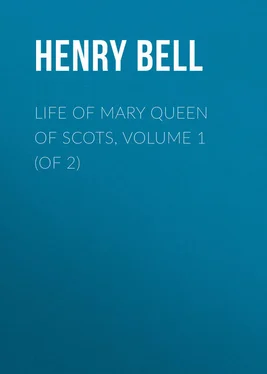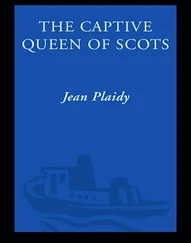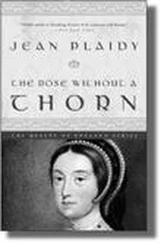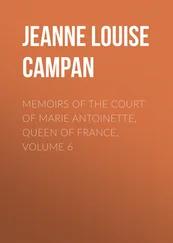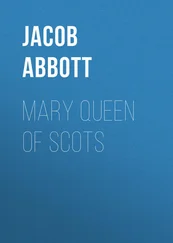Henry Bell - Life of Mary Queen of Scots, Volume 1 (of 2)
Здесь есть возможность читать онлайн «Henry Bell - Life of Mary Queen of Scots, Volume 1 (of 2)» — ознакомительный отрывок электронной книги совершенно бесплатно, а после прочтения отрывка купить полную версию. В некоторых случаях можно слушать аудио, скачать через торрент в формате fb2 и присутствует краткое содержание. Жанр: foreign_antique, foreign_prose, на английском языке. Описание произведения, (предисловие) а так же отзывы посетителей доступны на портале библиотеки ЛибКат.
- Название:Life of Mary Queen of Scots, Volume 1 (of 2)
- Автор:
- Жанр:
- Год:неизвестен
- ISBN:нет данных
- Рейтинг книги:5 / 5. Голосов: 1
-
Избранное:Добавить в избранное
- Отзывы:
-
Ваша оценка:
- 100
- 1
- 2
- 3
- 4
- 5
Life of Mary Queen of Scots, Volume 1 (of 2): краткое содержание, описание и аннотация
Предлагаем к чтению аннотацию, описание, краткое содержание или предисловие (зависит от того, что написал сам автор книги «Life of Mary Queen of Scots, Volume 1 (of 2)»). Если вы не нашли необходимую информацию о книге — напишите в комментариях, мы постараемся отыскать её.
Life of Mary Queen of Scots, Volume 1 (of 2) — читать онлайн ознакомительный отрывок
Ниже представлен текст книги, разбитый по страницам. Система сохранения места последней прочитанной страницы, позволяет с удобством читать онлайн бесплатно книгу «Life of Mary Queen of Scots, Volume 1 (of 2)», без необходимости каждый раз заново искать на чём Вы остановились. Поставьте закладку, и сможете в любой момент перейти на страницу, на которой закончили чтение.
Интервал:
Закладка:
It was not long after this martyrdom, that Cardinal Beaton was present at the marriage of one of his own illegitimate daughters, to whom he gave a dowry of 4000 merks, and whose nuptials were solemnized with great magnificence. Probably he conceived, that the more heretics he burned, the more unblushingly he might confess his own sins against both religion and common morality.
On the prelate’s return to St Andrew’s, Norman Lesly, a young man of strong passions, and eldest Son to the Earl of Rothes, came to him to demand some favour, which the Cardinal thought proper to refuse. The particulars of the quarrel are not precisely known, but it must have been of a serious kind; for Lesly, taking advantage of the popular feeling which then existed against the Cardinal, determined upon seeking his own revenge by the assassination of Beaton. He associated with himself several accomplices, who undertook to second him in this design. Early on the morning of the 29th of May 1546, having entered the castle by the gate, which was open to admit some workmen who were repairing the fortifications, he and his assistants proceeded to the door of the Cardinal’s chamber, at which they knocked. Beaton asked, – “Who is there?” – Norman answered, – “My name is Lesly,” – adding, that the door must be opened to him, and those that were with him. Beaton now began to fear the worst, and attempted to secure the door. But Lesly called for fire to burn it, upon which the Cardinal, seeing all resistance useless, permitted them to enter. They found him sitting on a chair, pale and agitated; and as they approached him he exclaimed, – “I am a Priest – ye will not slay me!” Lesly, however, losing all command of his temper, struck him more than once, and would have proceeded to further indignities, had not James Melville, one of the assassins, “a man,” says Knox, “of nature most gentle and most modest,” drawn his sword, and presenting the point to the Cardinal, advised him to repent of his sins, informing him, at the same time, that no hatred he bore his person, but simply his love of true religion induced him to take part against one whom he looked upon as an enemy to the gospel. So saying, and without waiting for an answer, he stabbed him twice or thrice through the body. When his friends and servants collected without, the conspirators lifted up the deceased Prelate, and showed him to them from the very window at which he had sat at the day of Wishart’s execution. Beaton, at the time of his death, was fifty-two. He had long been one of the leading men in Scotland, and had enjoyed the favour of the French King, as well as that of his own sovereign James V. Some attempt was made by the Regent to punish his murderers, but they finally escaped into France. 2 2 Knox seems not only to justify the assassination of Cardinal Beaton, but to hint that it would have been proper to have disposed of his successor in the same way. “These,” says he, “ are the works of our God , whereby he would admonish the tyrants of this earth, that, in the end, he will be revenged of their cruelty, what strength soever they make in the contrary. But such is the blindness of man, as David speaks, that the posterity does ever follow the footsteps of their wicked fathers, and principally in their impiety: For how little differs the cruelty of that bastard, that yet is called Bishop of St Andrews, from the cruelty of the former, we will after hear.” – Knox’s Hist. of the Reformation, p. 65.
There is good reason to believe that Henry VIII. secretly encouraged Lesly and his associates in this dishonest enterprise. But, if such be the case, that monarch did not live long enough to reap the fruits of its success. He died only a few months later than the Cardinal; and, about the same time, his cotemporary, Francis I., was succeeded on his throne by his son Henry II. These changes did not materially affect the relative situation of Scotland. They may, perhaps, have opened up still higher hopes to the Queen Dowager, and the French party; but, in England, the Duke of Somerset, who had been appointed Lord Protector during the minority of Edward VI., was determined upon following out the plans of the late monarch, and compelling the Scotch to agree to the alliance which he had proposed.
In prosecution of his designs, he marched a powerful army into Scotland, and the result was the unfortunate battle of Pinkie. The Earl of Arran, whose exertions to rescue the country from this new aggression, were warmly seconded by the people, collected a force sufficiently numerous to enable him to meet and offer battle to Somerset. The English camp was in the neighbourhood of Prestonpans, and the Scotch took up very advantageous ground about Musselburgh and Inveresk. Military discipline was at that time but little understood in this country; and the reckless impetuosity of the Scotch infantry was usually attended either with immediate success, or, by throwing the whole battle into confusion, with irretrievable and signal defeat. The weapons to which they principally trusted, were, in the first place, the pike, with which, upon joining with the enemy, all the fore-rank, standing shoulder to shoulder together, thrust straight forwards, those who stood in the second rank putting their pikes over the shoulders of their comrades before them. The length of these pikes or spears was eighteen feet six inches. They seem to have been used principally on the first onset, and were probably speedily relinquished for the more efficient exercise of the sword, which was broad and thin, and of excellent temper. It was employed to cut or slice with, not to thrust; and, in defence against any similar weapon of the enemy, a large handkerchief was wrapt twice or thrice about the neck, and a buckler invariably carried on the left arm. 3 3 Dalyell’s “Fragments of Scottish History.”
For some days the two armies continued in sight of each other, without coming to any general engagement. The hourly anxiety which prevailed at Edinburgh regarding the result, may be easily imagined. To inspire the soldiers with the greater courage, it was enacted by Government, that the heirs of those who fell upon this occasion in defence of their country, should for five years be free from Government taxes, and the usual assessments levied by landlords. At length, on Saturday the 10th of September 1547, the Scotch, misled by a motion in the English army, which they conceived indicated a design to retreat, rashly left their superior situation, and crossing the mouth of the Esk at Musselburgh, gave the Protector battle in the fields of Pinkie, an adjoining country seat. They were thus so exposed, that the English fleet, which lay in the bay, was enabled, by firing upon their flank to do them much mischief. The Earl of Angus, who was leading the van-guard, found himself suddenly assailed by a flight of arrows, a raking fire from a regiment or two of foreign fusileers, and a discharge of cannon which unexpectedly opened upon him. Unable to advance, he attempted to change his position for a more advantageous one. The main body imagined he was falling back upon them in confusion; and to heighten their panic, a vigorous charge, which was at this moment made by the English cavalry, decided the fortune of the day. After a feeble resistance the Scotch fled towards Dalkeith, Edinburgh, and Leith, and being hotly pursued by their enemies, all the three roads were strewed with the dead and dying. In this battle the Earl of Arran lost upwards of 8000 men; among whom were Lord Fleming, together with many other Scotch noblemen and gentlemen.
The English army advanced immediately upon Leith, which they took and pillaged; and would have entered Edinburgh, had they not found it impossible to make themselves masters of the Castle. The fleet ravaged the towns and villages on the coasts of the Forth, and proceeded as far north as the River Tay, seizing on whatever shipping they could meet with in the harbours by which they passed.
Читать дальшеИнтервал:
Закладка:
Похожие книги на «Life of Mary Queen of Scots, Volume 1 (of 2)»
Представляем Вашему вниманию похожие книги на «Life of Mary Queen of Scots, Volume 1 (of 2)» списком для выбора. Мы отобрали схожую по названию и смыслу литературу в надежде предоставить читателям больше вариантов отыскать новые, интересные, ещё непрочитанные произведения.
Обсуждение, отзывы о книге «Life of Mary Queen of Scots, Volume 1 (of 2)» и просто собственные мнения читателей. Оставьте ваши комментарии, напишите, что Вы думаете о произведении, его смысле или главных героях. Укажите что конкретно понравилось, а что нет, и почему Вы так считаете.
